Joseph Fahim | June 8, 2021
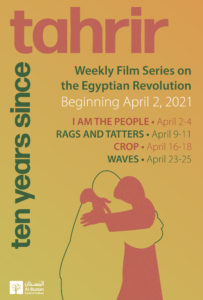
Where were you in 2011? That was the most prevalent question asked to nearly every Egyptian in the aftermath of the January 11 revolution – the largest mass uprising in the modern history of the Arab world’s most populous nation. Like millions of Egyptians, I joined the huge peaceful protests of Tahrir Square from the get-go – and had the dishonor of losing an accompanying blind musician on Jan. 28, the Friday of Anger – published some journalistic coverage of the event, and simply waited for a seismic shift to occur.
The day Mubarak stepped down on Feb. 11 was one of the most euphoric days of my life – a rare day when personal aspirations were seamlessly aligned with collective ends. In Tahrir, we saw the best of Egypt, the great potential of this country could be: the compassion, the selflessness, the determination, and the desire for self-betterment. Tahrir was a microcosm of the Egypt we dreamed of…the Egypt we wanted to build…and the Egypt that was never permitted to materialize.
What occurred over the course of the following four years has been extensively chronicled: the power gap and the division of the left that gave way to the rise of political Islam and the Muslim Brotherhood; the military coup of 2013 which was initially backed by the public; and the reinstatement of the old regime which was coupled with the expansion of powers of the military in a manner unwitnessed since the heyday of Gamal Abdel-Nasser in the 1950ies.
Jan. 25 was an act of sheer mass rebellion – an act that would never be permitted to take shape once again. As the years passed, the memory of 2011 began to wane; constantly disfigured, questioned, and deliberately forgotten. Jan. 25 has become the one public holiday nobody in Egypt is sanctioned to celebrate – a memento mori of the Egypt that was and the Egypt that could’ve been.
In the wake of the revolution, a host of films – feature narratives, documentaries, and shorts – was swiftly made in part to capitalize on the insatiable worldwide hunger for Egypt’s finest hour. These works ranged in quality and purpose, taking no distance in analyzing the roots and consequences of the uprising and inevitably ending with tidy, unfittingly closed resolutions. For those reasons, I was dismissive of the revolution films at first, calling them short-sighted and reactionary in many extensive analyses at the time. As time went by, and as the hope for democracy began to dissipate, the films grew darker and more complex, swapping the celebratory tone of 2011 with one that was darker, skeptical, and ultimately resigned.
Ten years after 2011, the revolution-themed films have acquired a new-found importance, a new-found meaning, that I did not foresee at the time. Just as 2011 has been forcibly receded from collective memory, so has its movies, relegated to the margins of Arabic Satellite channels and rarely figuring in festivals the world over.
As the world briefly rekindled its former romance with the Arab Spring in the wake of its widely-covered 10th anniversary, lots of ink was shed on the lost promises; the unfulfilled potential; the shattered dreams; and the uncertain future. For younger generations, the revolution meant little to nothing to them – a period of instability that gave way for a neo-liberal system where freedom of speech is rendered is a superfluous luxury, where any remote engagement with politics is deemed pointless and vain.
In this intentionally depoliticized environment where political films have become the scarcest of artistic commodities, the revolution films now stand as precious records of that rare moment in history when Egypt was unified; when democracy was not a pipe dream; and where politics could not be separable from art.
The desire to create the “10 Years of Tahrir” program was not to celebrate or reminisce about a glorious bygone era; the desire to present a group of some of the finest revolution films aimed to instigate a conversation about where we were 10 years ago and where we are now; to encourage the viewers to remember and reflect on what on what was lost and gained, in no particular order.
Each film of the program represented a part of this conversation we wished to ignite; each film represented a part of the grand revolution portrait we ventured to weave.
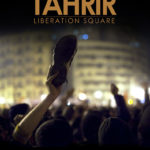
Stefano Savona’s “Tahrir: Liberation Square” (2011) is the most immediate chronicle of Tahrir – a manifestation of the revolution as a physical space abundant with diverse factions that have been united under the resolute objective of toppling Mubarak’s archaic regime. Set entirely in Tahrir square, Savona’s visual bonanza is a piece of direct cinema containing no narrative and capturing every detail of the dizzying action in the days leading to Mubarak’s outset. One of the earliest and most faithful documents of the revolution, Savona’s film now stands as a nostalgic look at the classless, egalitarian place that was Tahrir and a subtle dissection of the political divisions that would lead to the collapse of the revolution.
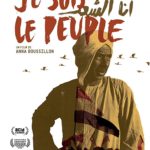
Away from Tahrir, in “I am the People” (2014), French documentarian, Anna Roussillon, follows a villager in Upper Egypt from the inception of the 2011 protests until the military coup of 2013 as his confidence in the possibility of democracy, in the possibility of a civil rule, begins to diminish. Offering a rare perspective of the revolution different from the habitual Cairo setting, Roussillon examines the heavy emotional toll the jarring fluctuations of Jan. 25’s aftermath left on the average citizens – a dizzying rollercoaster of political upheavals partially instigated by fracture in unity and leadership of the leftist opposition.
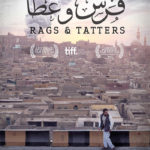
Roussillon painted a picture of a society mired in chaos and confusion, a picture similar in tone to Ahmad Abadlla’s “Rags and Tatters” (2013) The indie maverick’s wordless experimental feature sees a prisoner accidently discharged on Friday 28, 2011, as he makes his way through an unrecognizable city ravaged by violence and lawlessness. Bereft of the celebratory ambiance of prior revolution films, Abadlla’s conceptual piece is a stark sketch of a lesser-known facet of the protests – of the bedlam and the turmoil that engulfed Egypt in the wake of the police’s withdrawal that would soon propel the nation to give away with its freedoms in exchange for illusionary order. Prophetic in pointing towards the further bloodshed to come, “Rags and Tatters” digs into the heart of the dark Egyptian psyche – a psyche tainted by long years of dictatorship; a psyche that ultimately could not be saved in those momentous 18 days.

Another conceptual work casting uncertainty about the fate of the revolution while simultaneously shedding a different light on the nation-wide resistance that paved the way for Tahrir is Ahmed Nour’s “Waves,” an autobiographical free-form docu-fiction tracing the director’s childhood and upbringing against the growing dissent towards the Mubarak regime. Combining live action and animation and blurring the line between the public and the personal; Nour’s deeply personal tone poem is another demonstration of the breadth of a revolution that was not born, that was not restricted, to Tahrir: a revolution engineered by different strata of the Egyptian society and not by the young activists as it’s often been perceived. The fear the film is imbued with regarding the success of the revolution was also prophetic.
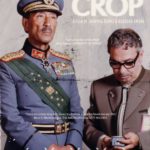
Marouan Omara’s documentary “Crop” (2013), on the other hand, examined the mechanism of state media from the point of view of a photojournalist who spent the larger part of his career giving a facelift to Mubarak’s public image. Shot entirely in Al Ahram, the country’s then biggest newspaper, “Crop” contains no interviews or talking heads, constructed entirely on the off-screen narration of the film’s unseen protagonist. Both a study of how authoritarian regimes control and wield the public narrative and a meditation on the myriad meanings of the image, Omara’s perceptive, meticulously-composed film is a unique portal into the mechanics of Egyptian journalism – a portal that would entirely shut down in subsequent years.

Finally, Roshdy Ahmed’s animated short, “The Unknown Sweet Potato Seller” (2017) produced and starring Khaled Abol Naga, recounts a murder mystery about the titular kid vendor who gets murdered in Tahrir amid a media blackout and refusal from the different parties in power to claim responsibility. A searing, dark portrait of injustice and a denouncement of the increasingly corrupted ruling powers, “The Unknown Sweet Potato Seller” is a snapshot of a revolution gone awry – a resigned commentary on a place and time on the verge of extinction from collective memory.
“Sweet Potato Seller” was banned in Egypt and remains the last 2011 revolution film; Its politically outspoken star, Abol Naga, would soon leave the country, never to return and work in Egypt until this very day.
Each title of this program is aesthetically distinct, proving that creative forms are inseparable from the conversed politics. Together, these films form a rich mosaic of the short trajectory of the revolution: the jolting ebbs and flows encompassing the early ebullience, the succeeding doubt, and the eventual loss.
Even though the current oppressive political climate gives the impression that all is lost, the Egyptian revolution, refracted through this group of films, reminds us that flame stirred in fateful afternoon of January 25, 2011, will continue to burn as long people remember….as long as these movies continue to be seen.


